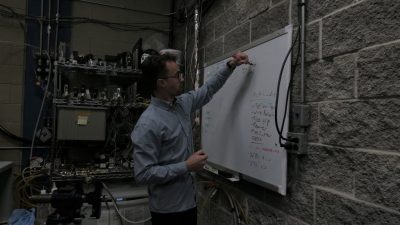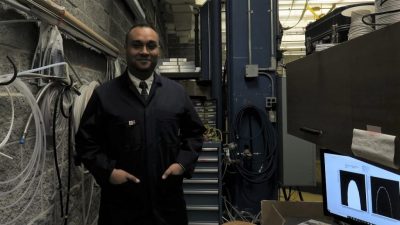The FlareNet Network has had two more students graduate with a Master’s of Applied Science (M.A.Sc.) in Mechanical Engineering at Carleton University. Congratulations to Jasvardan Sethi and Scott Seymour and their supervisor Professor Matthew Johnson.

Scott Seymour, Flaring Lab, Carleton University
Scott Seymour successfully defended his thesis (May 2nd, 2019), entitled, Spectroscopic Measurements of Path-Averaged Species Correlations in Turbulent Flare Plumes. Scott’s research examined the strength of species correlation in turbulent flare plumes in an effort to understand potential accuracy limitations of different field measurement approaches. Many such
approaches assume that different species in the turbulent flare plume are always present in fixed, steady ratios. Scott’s direct optical measurements of instantaneous soot and water vapour in flare plumes demonstrates this common assumption is not correct. Results of Scott’s work lay a path to defining different measurement protocols and minimum sampling times to minimize bias and uncertainty and ensure short bursts of high emissions are captured by the measurement system.

Jasvardan Sethi, Flaring Lab, Carleton University
Jasvardan Sethi successfully defended his thesis (May 7th, 2019) entitled, Application of an Optical Diagnostic (LII/ELS) to Measure Soot Formation Trends within Turbulent Buoyant Non-Premixed Flames. Jasvardan’s research used a laser based diagnostic (combined LII/ELS) system to examine the effects of in-flow turbulence on combustion in flare type flames by measuring soot formation trends with high spatial accuracy in a flame. Flare combustion at the exit of a long stack is categorized as turbulent non-premixed type combustion. Incomplete combustion of the flared gas results in emission of soot black carbon (a fine particulate matter), which is a known climate change forcer and a health hazard. Jasvardan’s research aims to provide further information to better link in-flow turbulence to the formation of soot in these flare-type flames. This type of research will help create better-informed emission models, which will help government regulatory bodies in managing emissions from flaring.